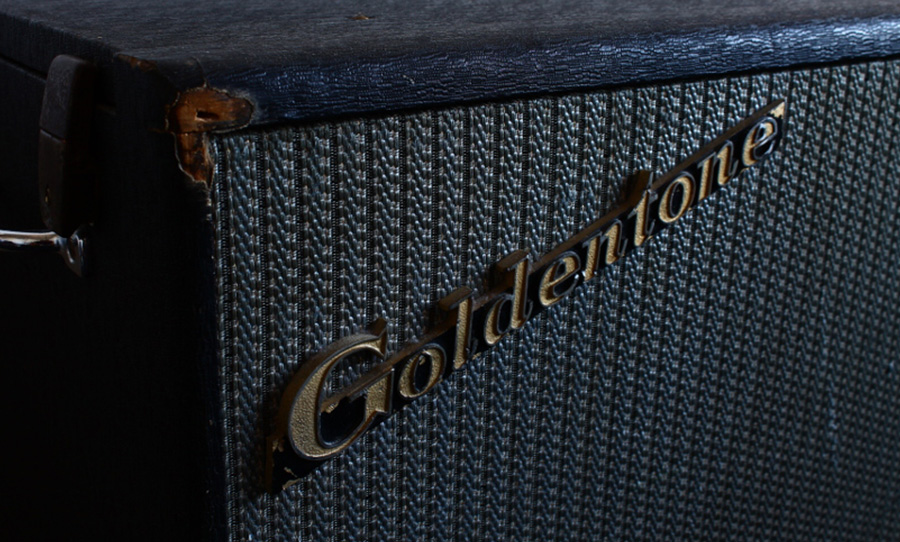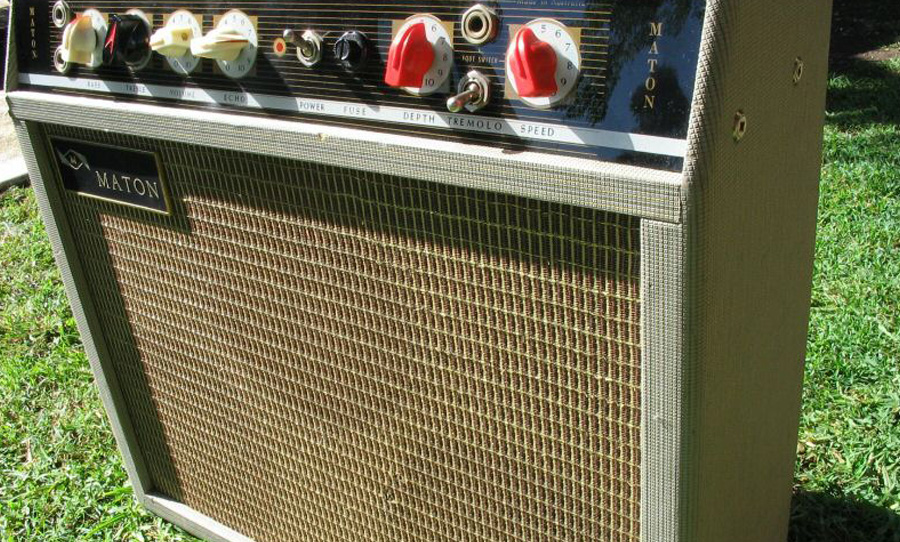Australian amps are rarely associated with the same kind of global reverence as those manufactured in other countries. That torch is held by the UK and the US, and has been for decades. The monolithic rise of pop music in Britain and the States in the 60s, and the subsequent attachment of brands to popular artists has seen manufacturers like Vox, Fender and Marshall sitting at the fore of guitar amplification for more than fifty years.
For guitarists in Australia, many of these amps that their heroes were blasting revolutionary music through were frustratingly out of reach. Taxation fees and other prohibitive costs meant that buying a Vox or Fender was out of the question for most. With a gaping whole in the market, it only made sense for enterprising Australian engineers to take up arms and start building amps on their own turf.
The 60s saw a boom in the manufacture of Australian tube guitar amps which have since largely become elusive compared to their counterparts across the pond. While overseas there was a clear sonic delineation between American and English manufacturers, Australian amps inherited an influence from both camps, resulting in a sort of divided ethos that has since made these amps furiously sought after by guitarists in Australia and around the world. Let’s dive into some of the most distinguished forgotten Australian amp manufactures from the 60s.
We went diving into the hazy history of vintage Australian amps and plucked out three shining examples of short-lived classics which still hold their own today.
Goldentone
If you’re looking to pick up a vintage Australian tube amp today, your best bet would probably be to go hunting for a Goldentone. Hugely popular amongst Aussie surf pioneers and garage heroes, Goldentone was one of the biggest producers of tube amps in Australia throughout the 60s and 70s.
The Goldentone range is a motley bunch with names and tones reminiscent of Fender‘s lineup at the time. However, many had reverb and tremolo circuits that were similar to Vox’s. Despite these two clear influences, Goldentones were distinctively original with their take on circuitry, tubes and aesthetics. Chatting with Premier Guitar, Australian amp master, Neil Rote elaborates. “What really fascinates me about these amps is that most don’t tend to really follow any Fender or Marshall pattern,” Rote says. “You have a whole pile of what were basically little family businesses building these amps using Aussie-made speakers and everything, and looking back, probably half of them sound absolutely fantastic.”
“Another thing worth noting,” said Rote, “is that they often use totally different valves to what other people were using, like the 6DQ6—Goldentone used those a lot. They were just a black and white television screen tube. They were absolutely cheap as chips, but they sound fantastic. The Aussie amps used these different valves often, which is part of the sound.”
That sound is still being sought after by Aussie guitarists today. You’ll find Goldentone amps in the inventory of garage purists like Eddy Current Suppression Ring‘s Mikey Young and Straight Arrows‘ Owen Penglis, both renowned for their zealous pursuit of era-specific tones and recording techniques. If you see one at your local vintage guitar store, don’t be hugely surprised, there are a few Goldentones floating around, and at a pretty reasonable price too, considering the outrageously inflated price tag of their English and American counterparts.
Maton
Maton are today known around the world for their acoustic guitars, but throughout the 60s and 70s the Aussie company were assiduous amp builders. Maton mostly dabbled in valve combos, but also the occasional solid state model, a trend which became increasingly popular in the early 70s (but proved to be relatively short-lived). All in all, Maton built over 20 different amp models between the early 60s and 1974, mostly low wattage tube combos, hybrid valve/solid state combos and elusive larger solid state models.
The AM series were said to be Maton’s first amps and were often sold in combination with lap steel guitars. Contributing editor of ozvalveamps.org Ken Palethorpe is well versed in the history of Maton, and has com across a few vintage AM models in his time: “Built as a completely contained unit, to use the amplifier you remove the rear cover which has two metal locating pins that lock it into the base of the cabinet and a spring catch at the top. A hole at the top lets you insert a finger to remove the back.”
“[The AM amps are] covered in “Leatherette” (Tan and Maroon are known colours) which is beautifully fitted and contoured. The Maton brand is stencilled in black or white lettering on the front. The speaker covering is not fabric but a bound piece of basket weave.”
These Matons were burly little buggers, known for their growly bottom-end and gritty mid-range. They were said to pair nicely with single coils and compress nicely when cranked, much like Vox AC15s and 30s of the era. You can read in-depth about Maton’s history, including their early efforts in the realm of amplifiers here or check out the Maton page on ozvalveamps.org.
The Lamberti Bros and Rex Amps
Frank and Anthony Lamberti cut their teeth in the Australian instrument market building banjo-mandolins, a lucrative business that was stretched to the limit as a two man operation. Opportunities to expand the Lamberti Bros banjo-mandolin business were stifled by over-exhaustion, and offers made from overseas markets had to be turned down. Enamoured by electronics, Frank Lamberti clung to a dream of building amplifiers nonetheless.
Before starting Lamberti Bros, Frank had worked at Astor Radio Corporation, an Australian radio manufacturer that dabbled in televisions, radios and record players and huge combinations of the three. It was here he fell in love with radiophonics and conjured a dream of building his own line of amplifiers. That dream manifested in Rex.
The first Rex amp was a three-watt, single-ended amp (loaded with a single EL-84 in the output stage) which paved the way for the far more illustrious BassKing. Produced throughout the mid-60s, the BassKing came in three different models, 20, 50, and 100-watts, each which looked basically identical from the front.
“The 20 watts, with two EL84 power tubes, weren’t that well regarded as a great amp at the time,” Lamberti’s son Joe told Premier Guitar back in in 2010, “but the second version is a much better sounding amp. The 50-watt had two EL34 power tubes and four 12AX7s. The 100-watt had 6L6s in it. Those amps, the 50s and 100s, are phenomenal. I’ve got a couple of them that are absolute monsters. The 100 is just unbearably loud. It’s crazy!”
‘Absolute monsters’ seems to be the general consensus around these higher wattage BassKing’s. Those lucky enough to own one today might note their kinship to Goldentone’s of the era, with similar a construction and aesthetic. They were thunderous amps with very high headroom, starting to break up around the 9 (out of 12) mark.
Production of Rex amplifiers ceased around in the early 70s, with about 3500 amps said to have been built in the company’s lifetime. The underdog 20-watt BassKing, however, was resurrected in 2006. And I mean literally resurrected: rather than going for a complete reissue, the Lamberti Bros brought back to life a bunch of unfinished amps that had been gathering dust in storage for more than 30 years.
While the original 20-watt BassKings were never as highly regarded as the beefier incarnations, these zombie models were given a makeover to suit modern players. Joe Lamberti spearheaded the revamp with a helping hand from an original Lamberti Bros employee who has built the amps alongside Frank and Anthony Lamberti in the 60s. The decrepit electronics from the originals were discarded, as were some of the resistors. The amps were also biased properly to give them “more punch”. Aside from a modern rehousing, these were the only changes for the new BassKing. So, if you’re looking for a modern looking amp with genuine vintage guts, go hunting for a BassKing reissue (vintage instrument stores in Melbourne would be your best bet).
Australia might not be known for its production of guitar amps, but there was a time where it was punching well above its weight in the field. Goldentone, Maton and Rex are just three shining examples of short-lived classics, but if you go digging there is a world of vintage Australian amps to discover. And if you keep your eyes peeled when hunting for gear, you might just strike gold.




